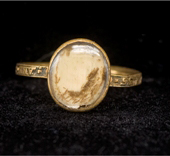photographing archaeological objects for record and publication...
a clear and accurate record...


how we do it...
help fund photographing our small finds by clicking on one of the images below...




the importance of creating a digital record...
As cataloguing is an important aspect of documenting our assemblage it is important that we adhere to widely-used cataloguing and archival standards, for example, by incorporating four levels of hierarchy i.e. 1. Collection 2. Group 3. Sub-group 4. Item; and by incoporating filenames (for the digital files) that reflect the reference numbers of the objects in our catalogue. This cataloguing method also gives us greater intellectual control over our assemblage, creates accurate descriptions, enables identification of preservation/conservation needs and widens access to descriptions and the objects themselves. This means that if we ever want to incorporate our catalogue within the catalogue of a professional institution (such as a record office), it should be easy to do so.